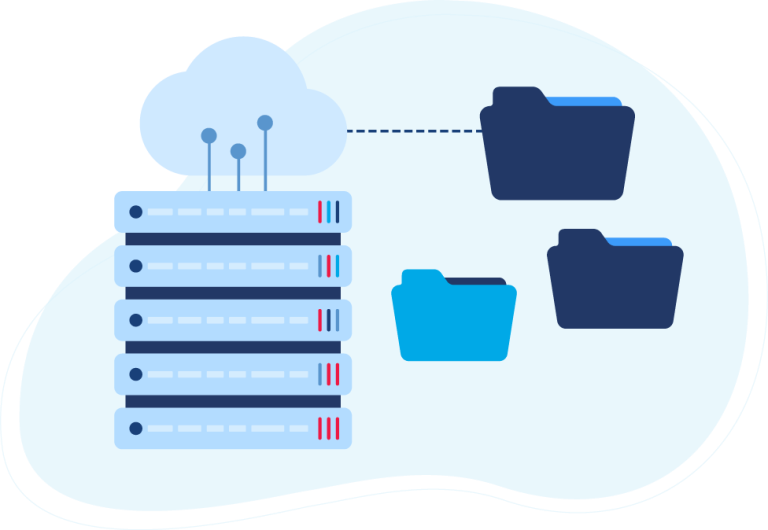One of the biggest pain points for eCommerce Merchants is bad business data. Let’s dive into how to improve your data quality and the benefits of data cleansing for growing businesses.

A frequent question we at VL OMNI get from Merchants looking to reduce the bad data effects in their business is, “What steps can I take to maintain the quality of my data?.” It all starts by understanding how Merchants value data in their business.
While solving ‘bad data’ may sound like a complex process to some, there are various strategies to tackle this issue. For instance, strategic data integration and data cleansing are key approaches you should know about. But before we get into it, let’s go over some concepts.
What is bad data?
Simply put, ‘bad data’ is any inaccurate or missing information about customers, orders, or products that lead to bad customer experiences and revenue losses in eCommerce businesses.
Bad data includes data that is missing key elements or is not relevant. This includes duplicated data, poorly compiled data, and so on. Using bad data can significantly affect the performance of your business and in some cases, prove big losses altogether.
How Bad Data Affects Your Business
Data is indispensable for your eCommerce business to grow and scale as it helps inform the trajectory and decision-making of your business. Most importantly, good quality data helps maintain a lean process from purchase to delivery as orders come into your online store.
Thus missing, inaccurate, and insufficient data can be a danger to your business.
Why Do You Need to Cleanse Your Data?
To describe the negative impact of bad data, data analysts often use the phrase ‘garbage in, garbage out.’ But it’s a very straightforward concept – if bad data flows across your applications and systems, insights generated are unreliable. Plus any actions taken on the basis of that data such as data integration can negatively impact the customer experience.
Oftentimes, businesses compile data with the goal of using it to make decisions based on the information collected. If businesses make decisions based on bad or incomplete data, for example, they will likely end up wasting valuable time and resources. This is why it’s important for Merchants to identify any errors in their business data and correct them as early as possible.
Bad Data Affects Customer Experience and Operational Efficiency
Data is the foundation of every business today. In fact, the effectiveness of your customer experience can also be affected when bad data flows throughout your business as data is a key element that informs it.
After customers, employees are the most affected by bad data. Across departments, be it marketing or sales or customer service; employees spend a significant amount of their time cleaning data and resolving the consequences of bad data.
So, how can you cleanse bad data in your business?
We are going back to the initial question we often get from customers, “How can my business maintain data quality?”
Businesses are often cautioned about their data collection and management practices as these can be just as important as the actual product or service that is offered to the public. This is why we at VL OMNI strongly encourage Merchants to evaluate their data and its effectiveness across their business’ entire tech stack.
Let’s take a closer look at how you can cleanse bad data across your business:
1. Managing data quality: Go directly to the source
The information contained in your customer database and key fulfillment applications and systems should be as accurate and complete as much as possible. While this sounds like a long, tiring process, here are some ways you can identify where data is affecting your business:
Inaccurate Product Data
For instance, let’s say a customer orders a specific product from your store but they receive a wrong item that doesn’t match the product description or lacks the same quality promised as per the product description on your site.
This could happen for various reasons. Whether the product doesn’t match a required format for a specific channel, that SKU number doesn’t exist anymore, or the product description is misplaced on your site, incorrect product data can affect the customer experience.
Incomplete or Wrong Customer Data
Bad customer data is the outdated, incomplete information of customers that exists across your key applications and systems. This could be anything, including misspelled phone numbers, addresses, etc.
With the help of good quality customer data, your business can offer a great personalized experience to customers every time they visit your store, online or off-line. Hence why it is imperative to cleanse this data as frequently as possible.
Inaccurate Shipping Data
Any incorrect or misspelled shipping data entry. Inaccurate shipping data implies incorrect card details, customer reference numbers, incorrect shipping addresses, and other criteria. This type of data can have a negative impact on your business and overall operational excellence.
2. Refine the collection of data: The importance of cleansing and validating data
The problem with bad data or data errors is that these errors often exist in many applications. With this in mind, e-retailers should take into account how data moves throughout all areas of their business.
Data cleansing is an essential process to verify and validate your data. This process is as straightforward as it sounds – converting data fields to a standard format, correcting typos, removing inconsistencies, filling in missing values, validating contact information, and more.
This includes finding out if data is accurate and precise in numerous areas. For instance, fulfillment, inventory, shipping details, buying records, marketing performance, and other key business areas.
3. Leverage data integration for business’ growth
The bigger a brand gets, the more people and data it takes to keep things running smoothly. That’s where data integration and automation come into play.
Once data has been “cleaned” meaning thoroughly proofed of errors and inconsistencies to ensure data quality and correctness, leveraging data integration is the next step in identifying and resolving data errors.
Why is data integration so important?
While data integration doesn’t cleanse, change, or fix your data, this strategic approach is in charge of moving your data seamlessly across your entire organization. If the wrong information is inputted then it will flow through various applications as such. That’s why it’s important no inconsistencies exist in your data from the very beginning. Once Merchants ensure data quality and correctness in their system, data integration becomes the process that bridges the gap between your data and disparate applications.
A strategic data integration approach facilitates consistent movement and delivery of data, creating a unified view of your business data across a wide range of applications. Additionally, automating the data delivery between applications creates a seamless experience for both your staff and customers.
Understand your data, understand your business
Understanding your data and having a data integration strategy in place enables your business to plug operational gaps. Consequently, pushing your business towards excellence due to the refining of your processes and data collection.
If data errors exist within your business, they should be corrected in their place of origin first. Brands using the VL OMNI Dashboard have a clear path to identifying any errors or issues being passed through their sales channels that are integrated by the VL OMNI platform.
Agile and scalable integration platforms like VL OMNI make sure that your business data is integrated to the best of its ability and according to specific business rules.
Empower your growth today
Unlike in the past, businesses today recognize the importance of data quality and use strategic approaches such as data integration to fix bad data within their business. A forward-thinking brand is one that recognizes data quality as its foundation impacting every business area. So, Merchants, we wonder, “What are you doing about bad data in your eCommerce business?”
While data quality cannot be achieved overnight, it can be possible with a plan and a robust integration approach.
Let us help you move your data
The VL OMNI Dashboard makes it visually easy to identify potential issues within your applications and provides general direction for resolving these errors in external systems fast.
 D365 Business Central
D365 Business Central Netsuite
Netsuite


